Exploring Jamaican Food: Tropical Sea Almond
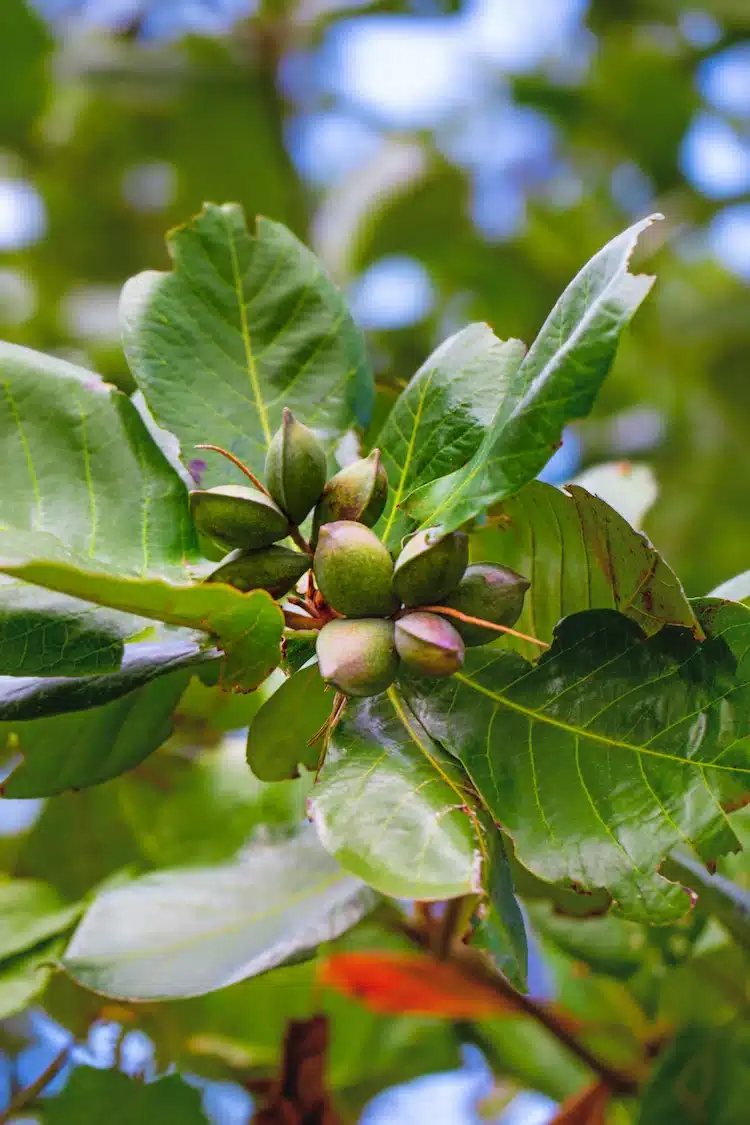
The Jamaican tropical landscape is beautifully decorated with the sea almond tree. Sea almond is one of the many names given to the Jamaican almond tree because it is often found growing near the coast.
While in Jamaica, you may hear the almond tree being called ‘Harmon’ by some locals. The Jamaican almond tree is also known as the tropical almond tree, Terminalia catappa, the West Indian almond tree, and the Indian almond tree.
The Indian almond or Jamaican almond fruit is deciduous, and its tree has broad, smooth leaves. When the tropical almond tree is ready to shed its leaves, they change from green to red.
For a typical Jamaican, the tropical almond tree is a reminder of their childhood, particularly because of its fruit. The Jamaican almond fruit is oval-shaped and grows to about two (2) to three (3) inches. When the fruit is young, the skin is green, and as it ripens, it becomes yellow or red. There is edible flesh beneath the skin of this tropical almond fruit, and when it is ripe, it has a sweet and tangy taste.
When the fruit falls from the tree, eventually, it will become brown as it begins to dry. The more it dries, the flesh and skin of the fruit start to fade away.
When the Jamaican almond fruit fully dries, its hard husk is exposed. Inside the husk, you will find the almond nut.
How does the Jamaican tropical almond (sea almond) differ from the almond?
The tropical almond (Terminalia catappa) and the almond (Prunus dulcis) are members of two completely different plant families. The almond tree (Prunus dulcis) is not grown in Jamaica, while the Jamaican almond tree is abundant and grows wild on the island.
Also, unlike the almond, the flesh of the Jamaican almond fruit is edible. The shell beneath the flesh of the Jamaican almond fruit is also very hard, unlike the thin outer layer of the almond, which is easy to remove.
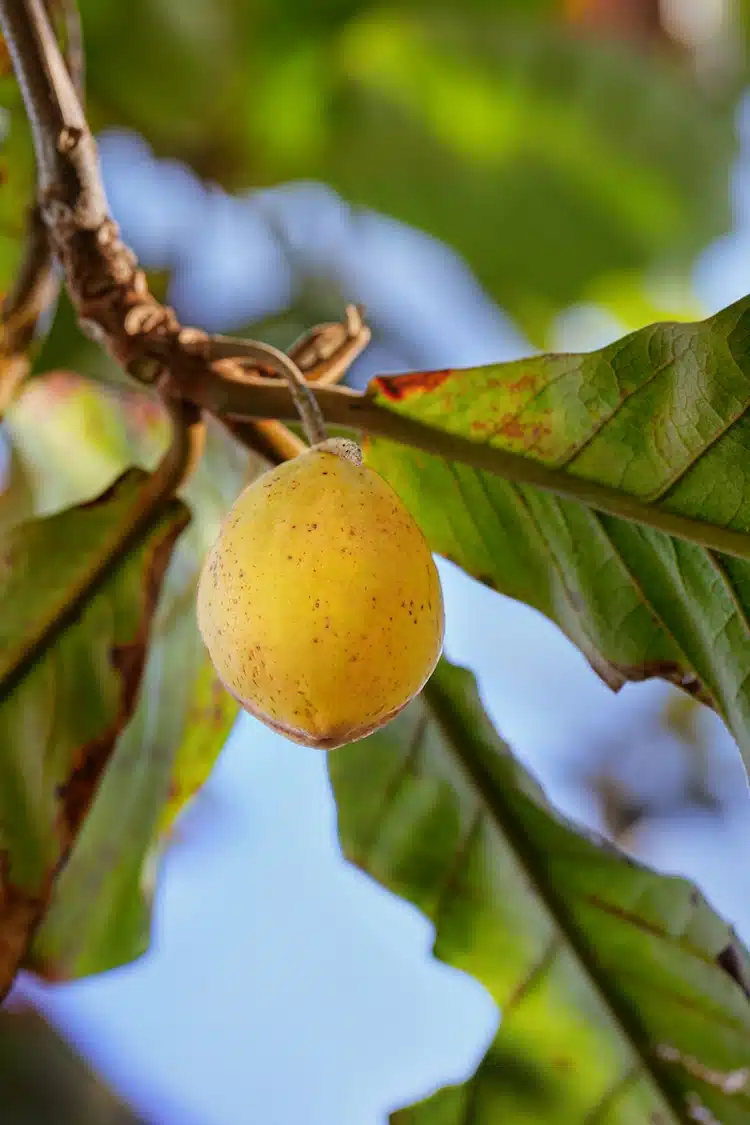
How do you open the tropical almond fruit?
Jamaican childhood memories are often associated with the cracking of these tropical fruits to get to the almond-like nuts. Cracking the tropical almond is a fun activity for children in Jamaica; however, it is not so fun for the adults.
The Jamaican almond is usually ‘hacked out’ of the husk after eating the flesh of the ripe fruit or after the fruit is dried and it turns brown. Stones are commonly used to crush the hard husk to get to the Jamaican almond. However, this edible seed may break into pieces if the husk is not crushed properly.
To successfully get the Jamaican almond from the husk, place the sharp edge of the fruit down on a flat surface, and then crush it with the stone until there is a cracking sound. Hammers or chopping knives are also commonly used in Jamaica to open the tropical almond fruit.
How is the Jamaican almond (sea almond) eaten?
Once the Jamaican almond is removed from a ripe or dried Jamaican almond fruit, it can be eaten raw. The Jamaican almond is soft, smooth, and tender, with a nutty flavour. This tropical almond may also be roasted to enhance its nutty flavour.
The Jamaican almond is also prepared as a delicious pastry snack called ‘drops‘. A traditional way to prepare the Jamaican almond drops is by boiling the tropical almonds with water, ginger, and sugar until the mixture gets thick and sticky. The mixture is then dropped onto a clean banana leaf and left to cool, after which it’s ready to be eaten.
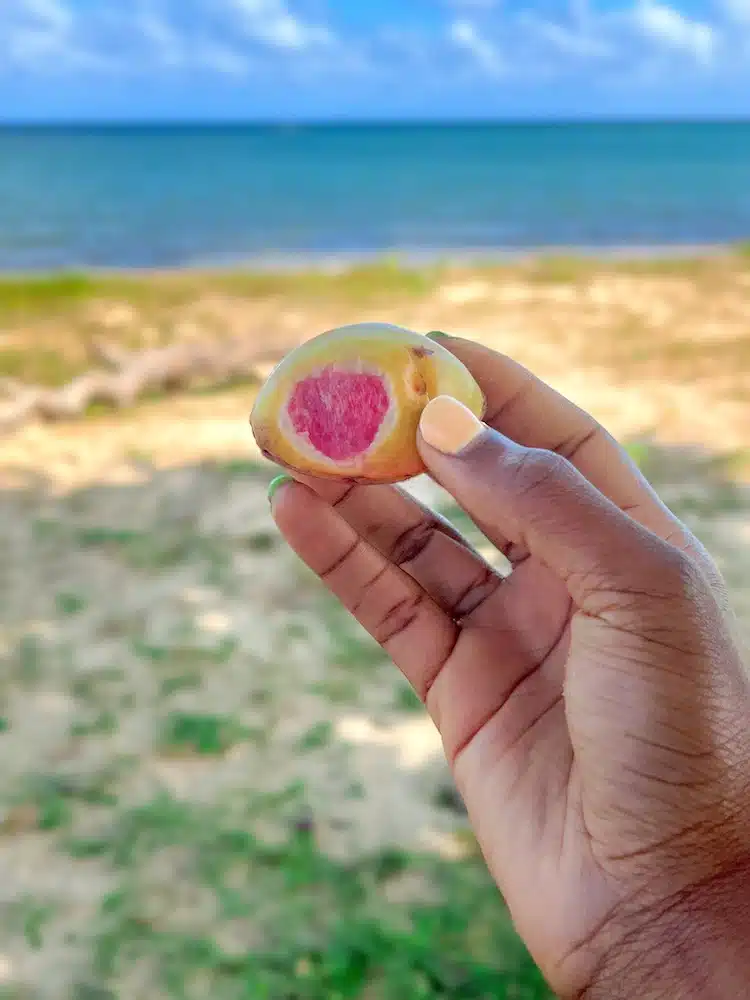
What are the benefits of the Jamaican Tropical Almond?
The Jamaican almond is rich in nutrients. It is a good source for protein, healthy fats, fibre, and various vitamins and minerals, including vitamin E, magnesium, and calcium.
Eating the tropical almond may help reduce body weight, improve blood sugar control, and protect against chronic diseases.
Among the many health benefits associated with the tropical almond tree, its leaves are believed to have antibacterial properties and are often used to treat skin conditions.
There is also scientific evidence to suggest that the leaf of the tropical almond contains a substance that may be effective in preventing cancer.
Disclaimer: The author makes no guarantees as to the curative effect of any herb or tonic on this website, and no visitor should attempt to use any of the information herein provided as treatment for any illness, weakness, or disease without first consulting a physician or health care provider. Pregnant women should always consult first with a health care professional before taking any treatment.
Related Post
Let’s stay connected! Find me on:
- Also subscribe to my newsletter for recipe updates!

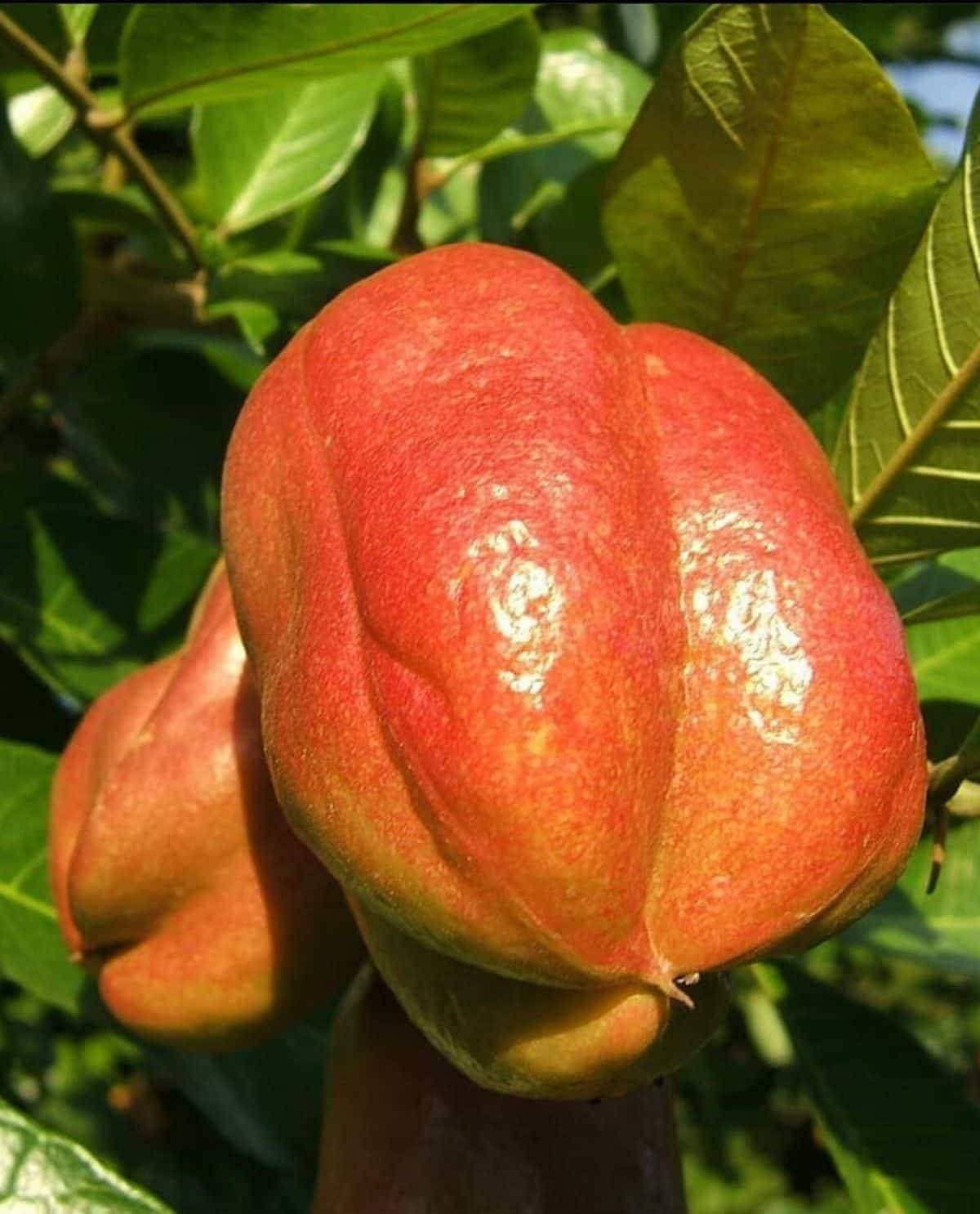
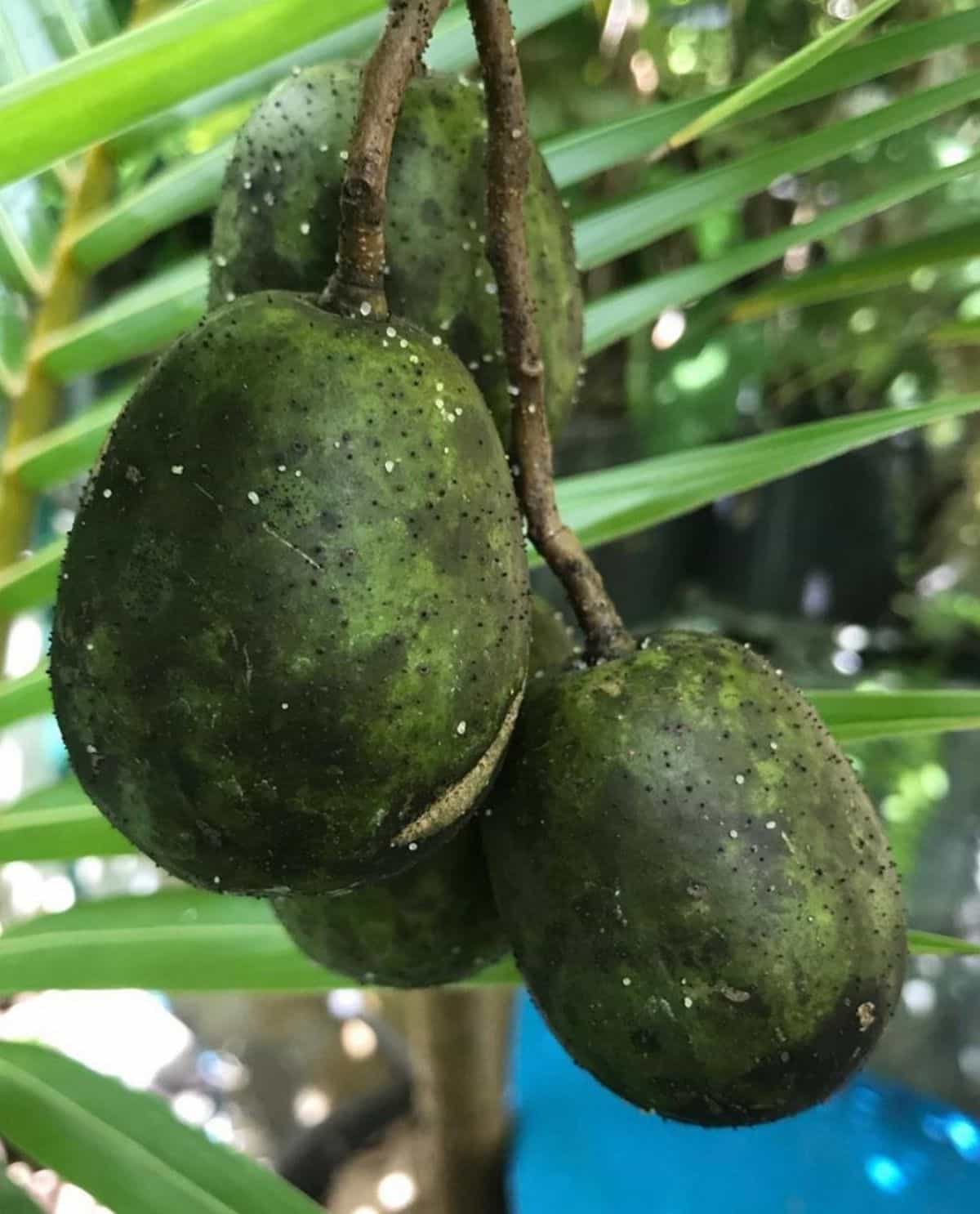

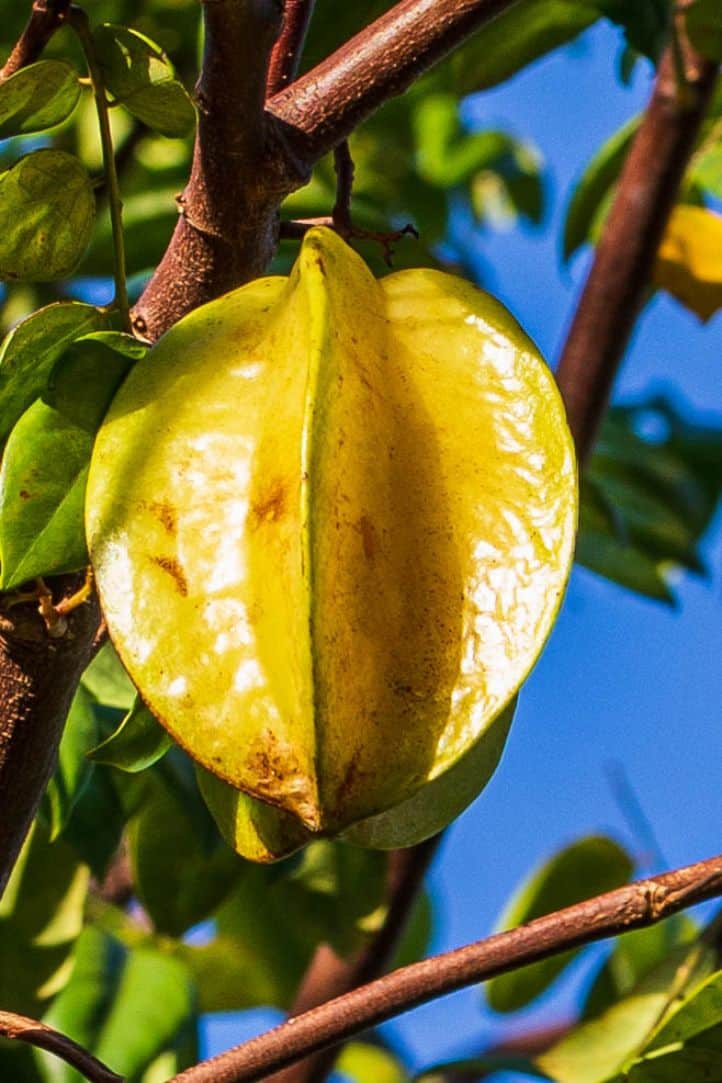

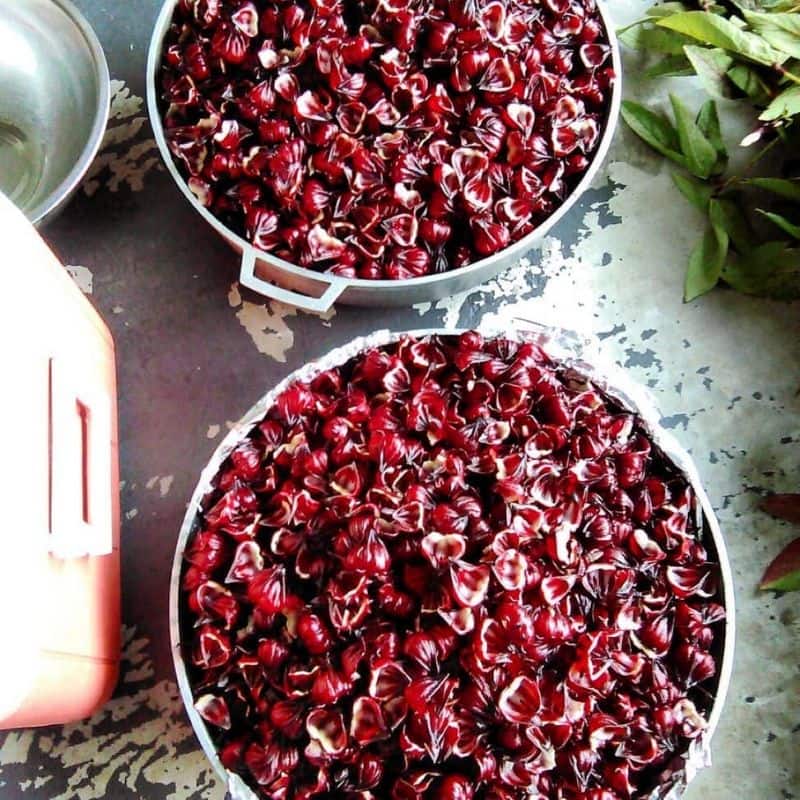
Oh wow, I had never heard of the Jamaican Tropical Almond but it is something I am no interested in trying!
I have never known Jamaican has its own almond fruit and it looks so succulent. I will definitely try to have some when I get to Jamaica.
This is such an interesting post. I always like to learn about the additional health benefits of natural items. The tropical almond tree’s leaves having antibacterial properties and treats skin conditions is so cool! Thank you for sharing!
Ooohhhh…I hadn’t seen this fruit till today. It looks very nutritious. I will be on the lookout for it here. Thanks for sharing about it.
I love this post! I have never heard of these before and now need to go get some~
We got married in Jamaica and have been back many times since and this is the first I’ve heard of or seen a jamaican tropical sea almond! It looks delicious!
You’ve definitely taught me something today. As someone who works with fruit and vegetables in their day job, I love learning about the different foods available world wide. This is one I’ve never come across before.
It’s interesting to hear about the differences between the two different types of almonds. I am a huge lover of almond smell over here. It just smells divine.
I had never heard of this type of almond! How cool!
I’ve tried a pretty wide range of fruits before but never come across this one. It does sound like it would be lovely. I’d love to try “drops”.
Hi Melanie, you would love the drops. We also make drops from coconut and peanut but almond drops is the best.
This fruit is fascinating. Its my first tome hearing about this Jamaican fruit. They’re very healthy and with lots of health benefits.
I remember my childhood days cracking “Harmon”. Beautiful shade tree for those of us in the rural areas. Funny enough my grandson just mention loving to eat it straight from the husk just yesterday and now I stumbled upon this post. Love your post!!!!.
hi Jasmine, thanks for stopping by, glad I could bring you back to your childhood with this post.
So I was surprised when I went to Hawaii and saw the same almonds trees and they do not eat it there.
I cracked a couple open and showed them that it was edible. I also found passion fruit and various other things such as breadfruit. Also they do not eat breadfruit. Crazy eh!
Hey Orel, thanks for sharing that with us. I didn’t know that. I knew breadfruit grown in Hawaii but I didn’t know that they done eat it, interesting.
I’m Jamaican and I didn’t know they use the almonds to make drops.
Really? Did you live in Jamaica? Are you from Kingston?
Wow bringing back childhood days i love my amonds as we call it in western jamaica so delicious.
Hi,
Please how are the leaves used?
Hi Baba, good question, but in Jamaica we don’t use the leave so I don’t know the answer to this.